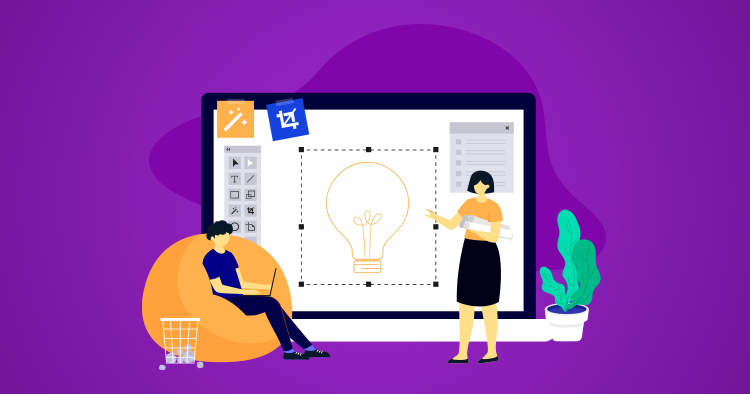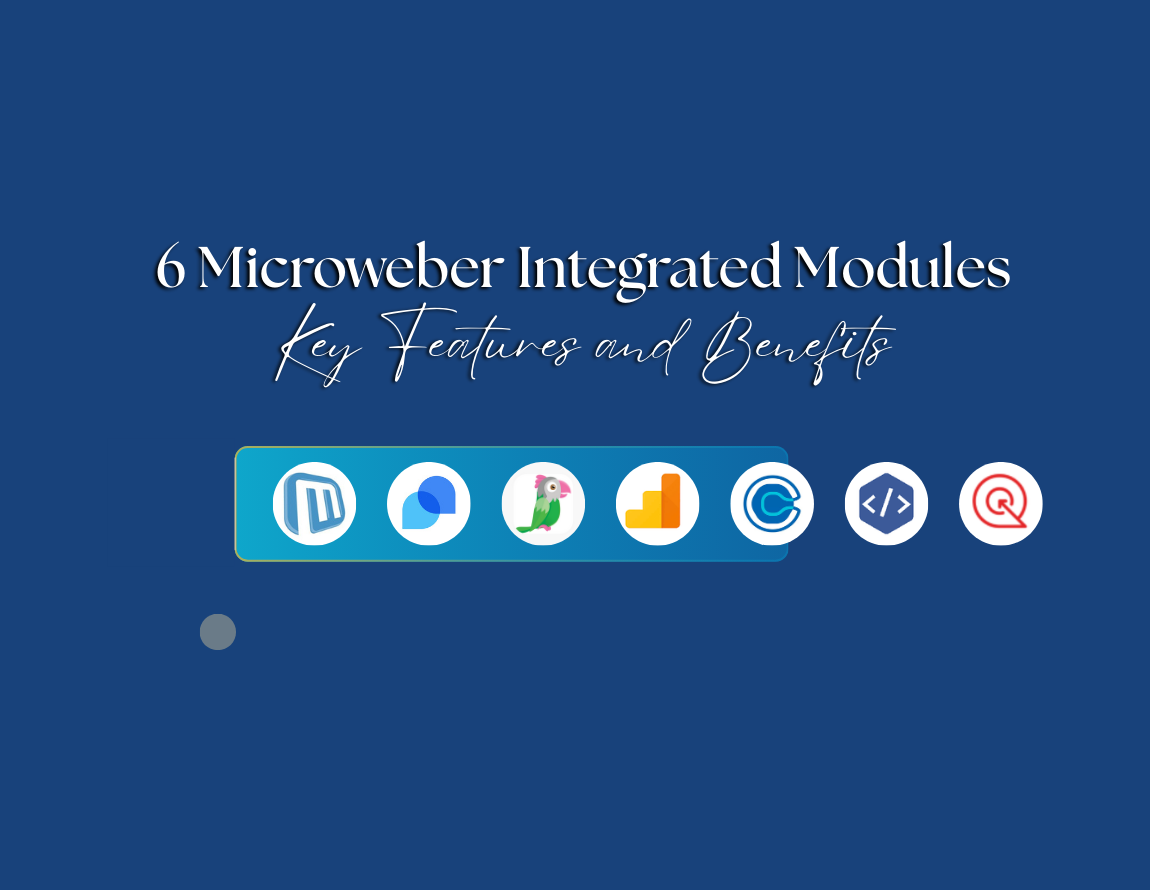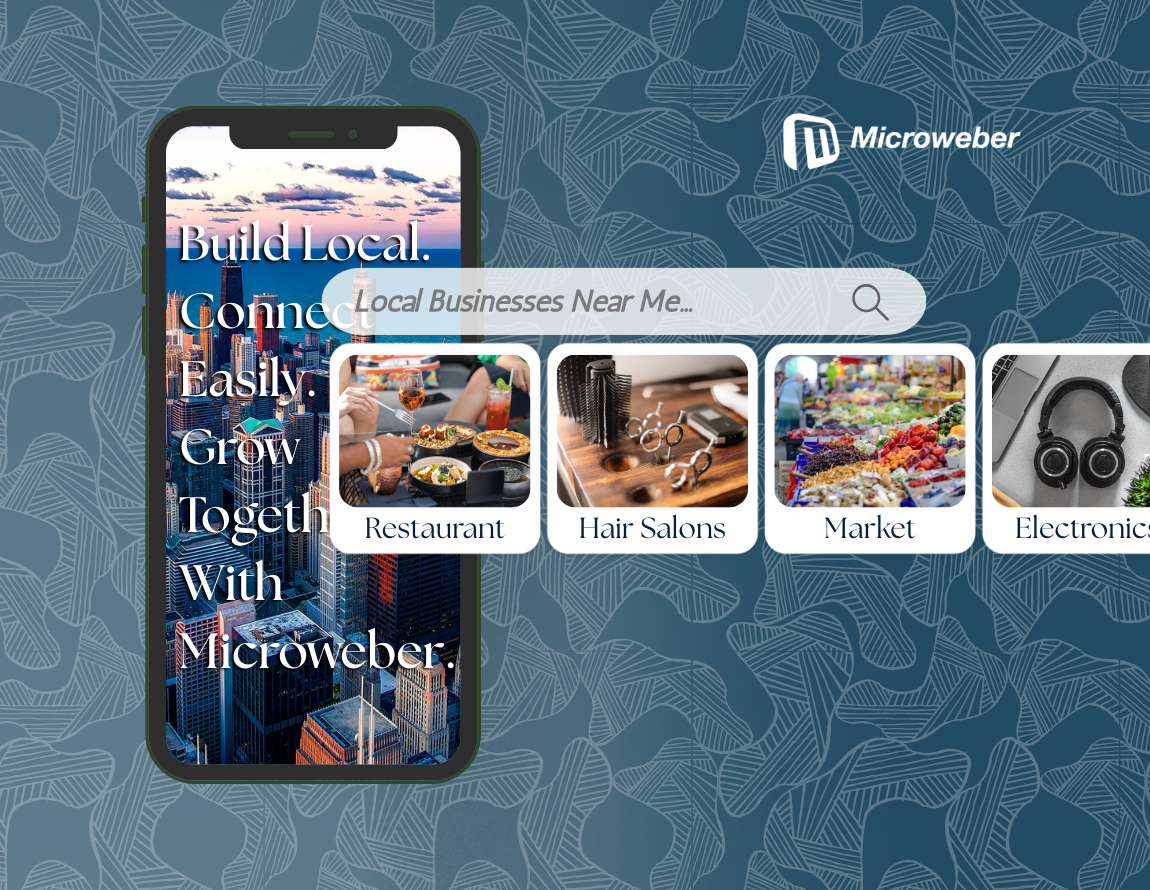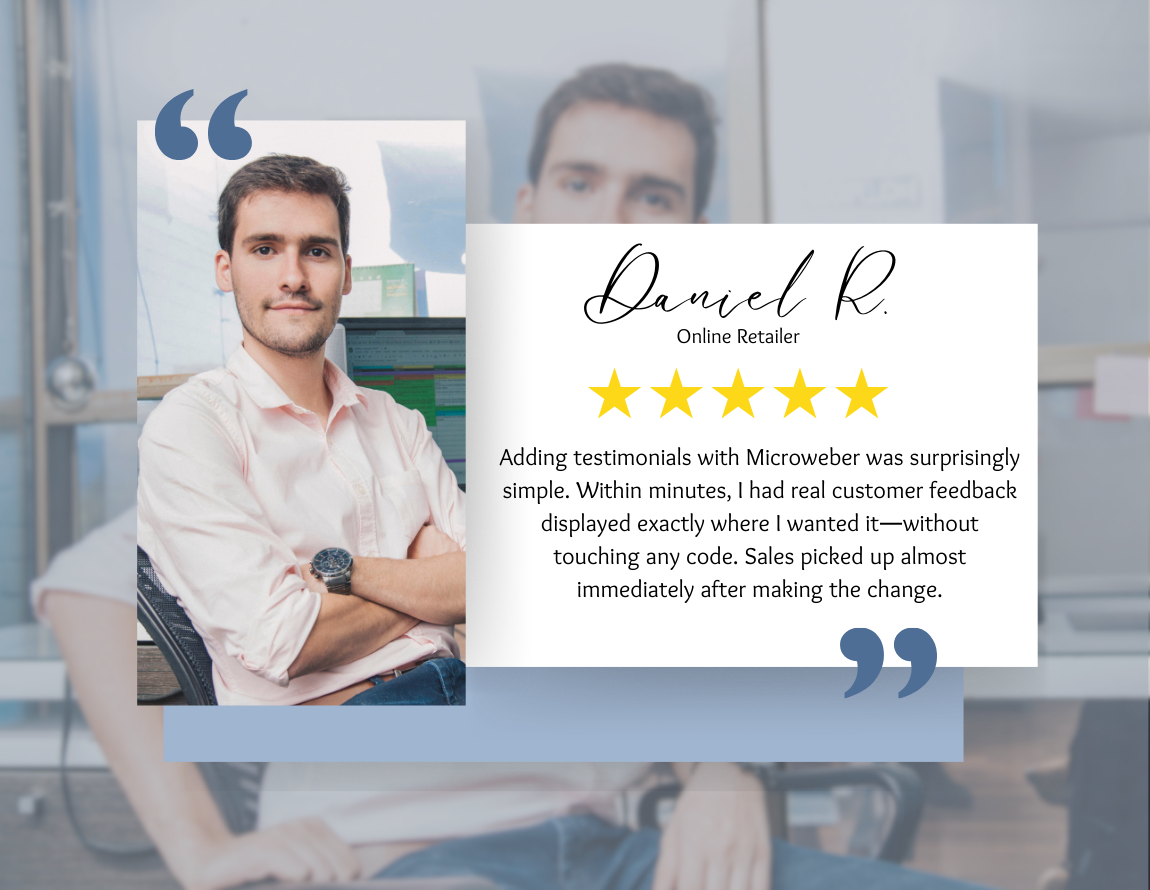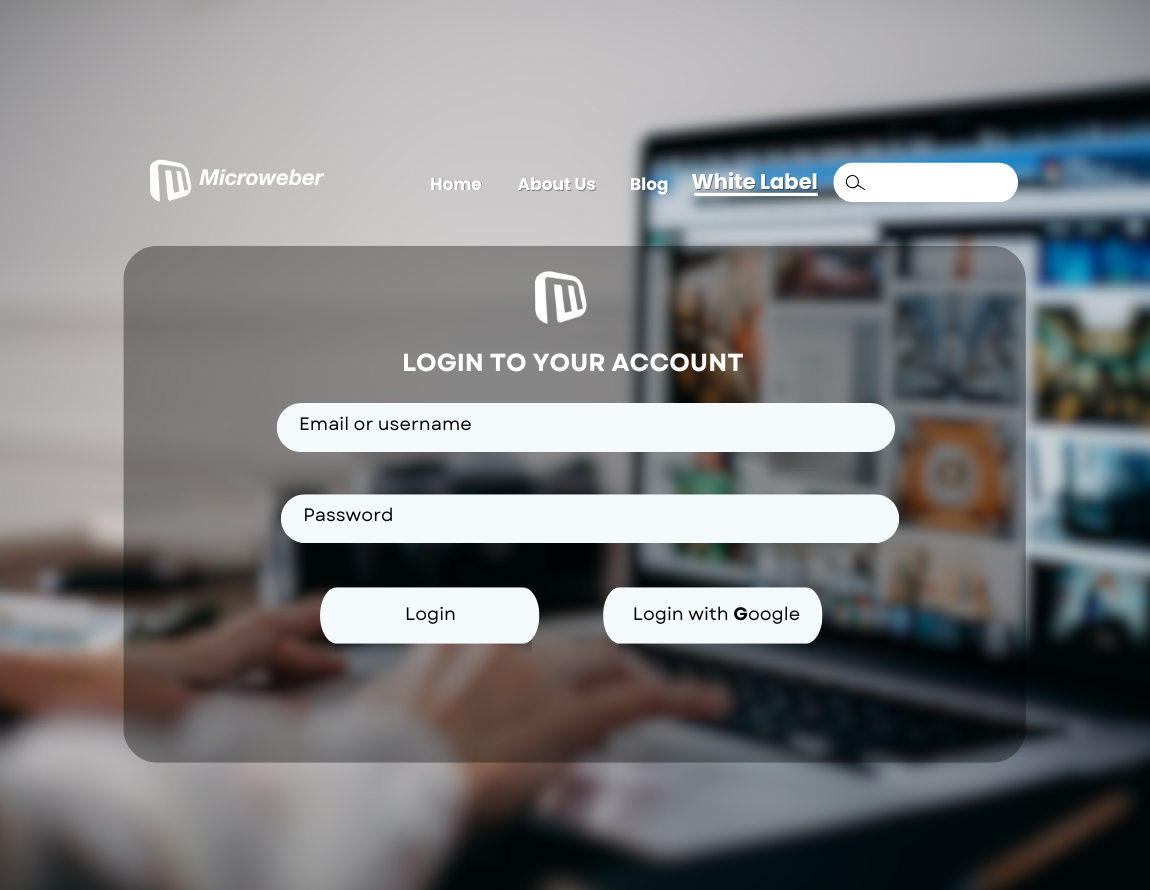From Ideas to Website: Website Building Made Easy
Posted on: November 04, 2024 Updated on: November 07, 2024 by Nada AllamTechnology nowadays is taking over the marketing field. Creating a website has become a crucial and one of the most effective steps to share your ideas, connect with target customers, or establish a digital presence and gain an audience. Despite your field or profession, your website should reflect your vision in order to gain value. Luckily, building a website is a lot more accessible than ever before. This is all thanks to intuitive tools and platforms that simplify the building process. We’ll take you into a step-by-step tutorial to aid you in defining your website’s goals in order to launch a successful business.
Understanding Your Website Vision and Goals
Defining the Purpose of Your Website
The first step starts by defining a clear purpose. A website is your idea personalized. Your website’s goal might vary, from selling products to providing information, or even showcasing your portfolio. Nonetheless, knowing your objective will lead you on the right path when it comes to shaping your design, content, and features. Take your time in considering every aspect, and envision your visitors’ experience as they go through the website. Your aim is to visualize their thoughts and learn of their habits and preferences in order to customize a website that fits their needs and tastes.
Understanding Your Target Audience
Your audience and customers are your base. You must know your audience in order to build a site that resonates. Identify those who visit your website and their needs. This will influence each step in the building process, from layout to content tone. For instance, if your website targets younger generations, then your focus will fall on interactive features and visuals. On the other hand, for a more professional audience base, you’ll require a straightforward and clear design.
Setting Clear Objectives for Your Online Presence
A proper mindset will help you go a long way. An outline with your specific objectives and goals will set you on a smooth sailing when it comes to website building. You must decide on your main focus points; might it be customer engagement, direct sales, or even lead generations. The clearer your objective the more guided your content will be, and upon which your design will be created to serve as a benchmark for success once your site is live.
Exploring Website Building Options
In a sea of new and upcoming technologies, your website building options are endless. You can take your pick from the platforms present, might it be for free or for a fee, and get started on your website without further delay.
Exploring the Benefits of Content Management Systems (CMS) vs. Professional Web Design
There are two types of website building methods. The first is to utilize one of the CMS platforms available, or to hire professional web design services. Such a choice is affected by multiple factors, the most prominent of which are your budget, technical skills, and website goals. A professional design service is bound to deliver a custom-built site, however, it mostly comes at a high price tag to accommodate to the services and the customer consultation sessions involved. On the other hand, CMS, like Microweber, offers you the flexibility to build your website and maintain it, free of charge. You can utilize the different features, including the drag-and-drop tool that allows you to build your own website in a few simple steps, and without requiring any coding or technical skills or knowledge.
Choosing the Right Platform for Your Needs
Upon choosing to utilize a CMS over Web design services, you must evaluate your technical skills, desired features, and the budget you are willing to work with in order to determine the platform that best suits your needs. For instance, if your goal is to create a portfolio, then you are looking for a platform that offers clean design templates and easy-to-use galleries. However, if you wish to venture into the e-commerce section, then a CMS that supports tools such as product listings and payment gateways is a must. You can also opt for the easiest choice and find a platform that provides a CMS that offers both visual and supportive tools. Microweber, for example, has a variety of templates made to fit different personalities and reasons. From galleries to secure payment gateways, some platforms include it all for the smoothest building possible.
The Essential Steps to Building Your Website
Through your journey to transform your ideas and brainstorming into a tangible online presence, it’s crucial to follow a series of essential steps. Those steps will be the foundation for your website and will guide you through the key decisions. You must keep in mind to choose a memorable domain name, choose an appropriate hosting service, and build a website structure that will last and resonate with your target audience, ultimately helping you to achieve your online goals.
Crafting a Memorable Domain Name
Your domain name defines you and your business. It should be simple, memorable, and of course, relevant to your brand identity and goals. A complicated domain would be harder to remember, and will not leave a long-lasting impression on your audience. There are tools such as GoDaddy or Namecheap that would aid you in checking the availability of your chosen domain name.
Choosing a Hosting Service That Fits Your Needs
Your website’s reliability and performance depend on the hosting service. The most popular go-to option most website builders opt for is to include shared hosting or dedicated hosting, depending on the scalability, bandwidth, support, and traffic your website creates.
Choosing a Design Template or Theme
Your design is your technical tone. A theme that aligns with your brand will leave a remarkable memory in your audience’s mind. Choose a theme that offers the customization options you need to be able to achieve your vision without much of a hassle. Most platforms nowadays offer a variety of pre-designed templates. However, you must ensure it is mobile-responsive in order to adapt as your website grows.
Customizing Your Website to Reflect Your Brand Identity
A successful brand transcends the test of time. A set color, font, and imagery that properly reflects your brand’s identity will create consistent branding that fosters trust and showcases a professional appearance. Platform customization tools are available for such a purpose, use it accordingly to align the look and feel of your website with your chosen image.
Building an Intuitive Website Structure
Easy navigation is the key structure to all intuitive websites. Pages, like Home, About, Services, and Contact, must follow a logical hierarchy that enables your audience to travel swiftly through the pages. Each page should be clearly labeled in order to enhance the user experience and support SEO in order to attract and retain visitors effectively.
Creating Engaging and Relevant Content
Your brand is your image, your design is your tool, and your content is your soul when it comes to creating a successful business. Your goal is to capture and retain your visitors. This is why you should focus on creating content that is relevant and engaging. It should be tailored to your audience’s interest; might it be through high-quality, informative material that addresses important points, or storytelling and clear calls to action that encourage interaction. Updated content keeps your brand fresh and aligned with industry trends, which further enhances user engagement and works to boost your site’s credibility.
Identifying Key Pages Your Website Needs
The founder key pages of all websites are the Home, About, Service, and Contact. Depending on your website’s purpose, you may also need more pages, such as Blod or Template. Those pages should be easy to find well-organized and filled with all the relevant information to ensure a pleasant user experience.
Understanding the Importance of SEO in Website Content
SEO is your key to attracting organic traffic. A correct deployment of SEO to optimize your content will help you appear higher in search engine results, and consequently draw in more visitors with each new post.
How to Structure Your Content for Maximum Impact
Your content’s main focus is to guide visitors seamlessly through each page of your website. Clear and structured headings, bullet points, and visuals will ensure your readers reach their needs without a hassle.
Utilizing Visuals to Enhance User Experience
A softer, more grainy texture can determine the difference between faux and real leather. In the same sense, high-quality visuals add a professional touch that separates your brand from others and makes it stand out. Original images or even purchased top-quality photos, infographics, or videos can add to your user engagement. Such small differences will leave your brand in mind, especially for complex topics.
Implementing Technical Aspects for a Successful Launch
A successful launch will allow you to create the first wave of traffic required for your business to flourish. There are key elements to achieve such a launch, one of which is to focus on designing an intuitive navigation menu, creating essential pages, using necessary plugins, optimizing your website for mobile, and ensuring to test the functionality of your website before going live.
Mapping Out Your Site’s Navigation Menu
Upon launching, the first thing your visitors will do is discover your website and its essence. A hard-to-navigate menu will bore your audience and leave a harsh vision in their mind regarding your brand. Clear and concise labels for each section ensure that your audience can easily move between pages without confusion or losing passion to discover more.
Creating Essential Pages: Home, About, Services, Contact
Your pages should create a flow that guides your audience through your website. Your Home page’s main purpose is to welcome visitors, while the Services pages explain your offerings. The About page helps you build a connection with your audience, new or old, and the Contact page provides a way for your users to reach out to you. Each page contains essential information that should not be neglected to ensure a proper flow.
Essential Plugins and Add-ons to Consider
The purpose of your website determines your chosen plugins. Your website should include appropriate tools, such as SEO, analytics, and security features that will improve the site’s functionality and credibility. However, keep in mind to install only the required plugins, as too many add-ons can slow down your site in the long run and cause issues with the overall user experience.
Mobile Optimization for Today’s Users
Worldwide accessibility made it so that users are no longer tied to their laptops and computers. Many of the visitors would prefer a design that looks great on all devices to adapt to whichever screen they are visiting. This is where mobile optimization comes in. A proper website must ensure a responsive design that provides a user-friendly experience on both mobile and desktop alike.
Testing Functionality Before Going Live
Practice makes perfect is an idiom that has not been proven wrong to this day. Proper practice and regular test runs before launch ensure that your site works smoothly. This step allows you to check for broken links and ensures that your contact forms work, and that your visuals load without delays or errors. This way, by the time you are ready to launch your website, you can ensure that you’re providing a seamless experience for all your visitors.
Strategies for Promoting and Maintaining Your Website
Promotion and Maintenance go hand in hand when it comes to your website. Such a process requires a strategic integration with social media platforms, and consistent updates to keep your brand’s presence online. Additionally, a regular updating of your site’s software and the used plugins will ensure the security and functionality as your brand grows. Such intriguing content enhances the user experience and keeps your visitor returning, which reinforces your site’s appeal and increases its relevance as it expands.
Social Media Integration and Marketing
Social Media has taken over the world. There is no aspect or field that social media could not be integrated into, with marketing being one of the most prominent usages of integration. This is why your website should be integrated with social media channels. Your shared content will not only reach a broader audience, but it will encourage new visitors to follow and engage with your site on those channels, ultimately allowing you the chance to keep them updated and lure them towards your brand.
Regular Updates and Maintenance Tips
Your website will be in a constant battle with millions in the business and field. In order to keep your website relevant, regular updates are a must. Might it be your content, software, or plugins, fresh features will keep your engagement.
Leveraging AI and Automation in Website Creation
AI is the leading technology that will no doubt shift every business’ view in the market. AI and Automation can aid you in your website design, your content generation, and even your engagement. AI tools can build a template and provide content suggestions to fit your brand’s identity, while chatbots can provide real-time support and answers to common questions. While a full dependence on AI tools results in lots of errors, proper utilization can improve your user experience.
Utilizing AI Tools for Design and Content Creation
Copy generators and design assistants can introduce you to a streamline of content creation. Such tools can help you in the process of generating ideas or even adjusting your pre-written content to fit the target audience's preferences.
Integrating Chatbots for Enhanced Customer Engagement
Customer support plays a pivotal point in any successful business. Brands can rise and fall depending on their customer service, as it is the one direct connection to the customer and a reflection of how the brand and its workers appreciate their audience. While human customer support cannot be outmatched, chatbots can provide instant support that enhances engagement. A set form of questions and their proper answers can be programmed to aid in the customer service process and be available for your audience at any time.
Addressing Common Challenges in Website Building
No successful business is free from challenges. The road to building a successful website can include an array of challenges. Such errors can be maintained and overcome through simple methods. The proactive approach to challenges will ensure a user-friendly and professional website experience for your audience.
Identifying and Overcoming Typical Mistakes
Cluttered design and visuals:
One of the most common mistakes in website building is a cluttered design. This along with hard-to-read text leaves your visitor confused and requires more focus and time for them to go through your website. A clean-cut and simple structure can optimize the image of your brand and give it a professional look and feel.
Slow Load Time:
Plugins and modules are a double-edged sword. On one hand, plugins are necessary to aid in your website’s flow and increase your brand’s credibility. On the other hand, too many plugins can slow or even crash your website, especially when faced with a wave of visitors as your brand grows. This can be tedious to visitors and results in them abandoning the website.
Ignoring Mobile Optimization:
With the modern-day hectic lifestyle, mobile users can form the majority of web traffic. A site that fails to optimize to mobile screens is missing a whole genre of audience. Such optimization includes a responsive design and adaptable layouts that are touch-friendly.
Neglecting SEO Basics:
SEO practices are placed to aid your website in gaining the visibility it requires in search engines. Poor SEO can result in a reduced traffic. This is why you must be sure to include at least, the most basic and essential SEO elements, such as keywords that are appropriately placed in the headers and meta descriptions. You can also refer to SEO-friendly URLs, links, and optimized load times in order to reach higher visibility and rankings.
Failure in Regularly Updating Content:
Outdated content are forgotten content. If your content is not updated on a regular basis, your website will lose its flow and visibility among the audience. A way to ensure such an error doesn’t occur is to audit your content to ensure accuracy, keep your links updated, and consider fresh content in order to keep your brand relevant in search engine results.
Best Practices for Ensuring Website Accessibility
Website accessibility is usually overlooked, yet it is crucial for new businesses. Accessibility is not about compliance, but rather to allow your site to reach a wider array of audience. Accessible designs, such as alt tags for images, transcripts for audio content, and color contrast that meet accessibility standards are the most basic and well-known accessibility practices. Applying such practices will allow your brand to reach a wider audience and gain further credibility.
Avoiding Frequent Pitfalls in Website Development
The final step in any website development is to ensure there are no major or frequent pitfalls before the launch. Regular and constant tests, maintenance, and updates can be an ongoing process of minor refinements that seem endless. Nonetheless, it is what will set your website apart from others. A pitfall-free website resonates with the audience and lures them to visit over and over without worrying about a crash or an issue occurring as they browse.
Conclusion
The website-building process is not an easy task. However, thanks to modern tools that make it accessible to all, it has become a less tedious process. All you need is a clear vision, a strategic plan, the right platform, and of course a structured approach. Then, you can transform your ideas into a professional and engaging website that lasts.
FAQs
Can I Create a Website Without Technical Skills?
Modern Content Management Systems (CMS) offer user-friendly tools that allow anyone to create a professional website with no coding or technical skills.
What Are the Costs Involved in Building a Website?
A variety of website builder platforms offer free subscriptions for the basic layout. However, costs might be included in domains or the purchase of premium content, such as themes or plugins.
How Often Should I Update My Website Content?
Regular updates ensures your website remains relevant and visible. New content every few days, or even weeks, is a good practice to follow in order to keep the flow of traffic on your site.
What Resources Are Available for Learning Website Building Skills?
Resources that aid in website building skills can be found online in multiple forms. You can find tutorials, help centers, communities, and forums that provide guidance and the needed knowledge for building skills.
How to Keep My Website Updated and Engaging?
Engagement requires regular new content. You should monitor your visitor’s behaviors and consider their preferences in order to find the correct promotion approach. This allows you to gain traffic, keep the flow of the audience, and prepare analytics that would aid you as your brand grows.

